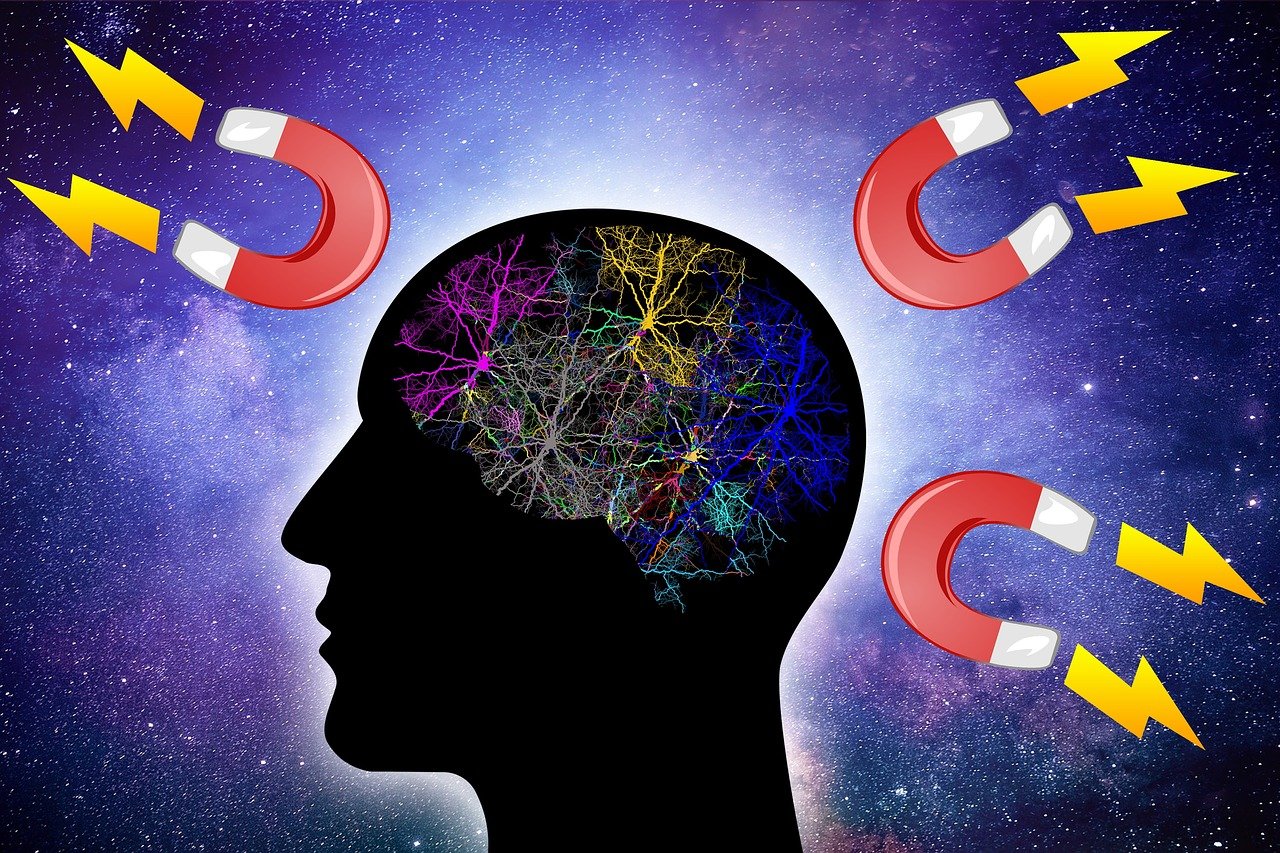
Designing Your Brain With Brain Training
Brain plasticity effectively means that you can grow and reshape your brain in just the same way you can reshape your muscle.
That in turn means that just as a bodybuilder can increase their muscle size and choose the physique they want, so too can you potentially use brain training to develop key brain areas and to design the kind of intelligence you want.
The general principle behind growing and shaping your brain is the exact same as the general principle behind growing and reshaping muscle.
That is SAID: Specific Adaptations to Imposed Demands. You want better math ability? Then do more math.
You want better spatial awareness? Then use that part of your brain.
Most of us don’t look at the brain in that way though. We use brain training in a very general sense and with no real objective.
We also don’t realize the potential of our brains at all.
For an idea of just what’s possible, consider cases of individuals like Daniel Underwood, who have managed to develop ‘sonar’ to find their way around and to compensate for a loss of vision.
If you can develop your sense of hearing to the point where you can use sonar, then imagine what you could do with other parts of your brain?
Einstein’s Brain
Structural differences in the brain certainly do correspond with differences in the nature and extent of human intelligence and there is no better example of this than Einstein’s brain.
Einstein had unusual large inferior parietal lobes which were also strangely shaped.
Your brain and my brain have a large cleave cutting through the middle of this structure called the Sylvian Fissure.
Interestingly, Einstein’s veered upwards and didn’t completely divide the lobes. His were also symmetrical, whereas most are smaller on the left.
The role of the inferior parietal lobe is to integrate sensory information across modalities. It is particularly important when it comes to spatial sense and navigation.
So, when we listen to Einstein’s accounts of how he came up with his theory of special relativity – by imagining himself to be travelling on a beam of light and looking back at the world around him leading to an innate understanding of the relationship between time and movement… it all kind of makes sense.
What also makes sense is that Einstein had a thicker corpus callosum – a structure that joins the two hemispheres of the brain.
This would allow different brain areas to communicate more effectively, thereby leading to greater whole brain connectivity (which we know to be an important predictor of general intelligence).
It also follows that Einstein was ambidextrous.
But perhaps making an argument for specialization is the fact that Einstein was probably dyslexic and some rumors claim he didn’t start speaking until the age of four.
The take-home message is that you could theoretically learn to think like Einstein.
First by increasing your plasticity, then by practicing visualization and navigation to grow your inferior parietal lobes and perhaps by practicing ambidexterity to grow the corpus callosum.
But great though he was, you should not seek to emulate Einstein. Instead, focus on becoming the very best version of you.
Does Brain Training Really Work? The Limits of the Human Mind
Many of us are fascinated with the idea of increasing our intelligence, our focus and our memory.
If we could increase our capabilities in these areas, then we could solve more problems, we could succeed in our careers, and we could gain the respect of our peers.
But can the brain really be upgraded? Is there such thing as a real ‘Limitless’ pill?
And do all these brain training games really work?
The Hidden Potential of the Brain
You’ve probably heard claims that we only use a small percentage of our brain and that we have lots of untapped potential.
Well the latter point is true, but the former is a complete myth and misunderstands the way our brain works.
Likewise, many ‘brain training games’ have been shown to only really improve the specific task that they present us with.
Counting penguins makes you better at counting penguins and that’s about it.
But that is not to say that there aren’t ways we can enhance our brain function and get more from our various mental faculties.
It is possible to upgrade such things as focus, memory and attention, but in order to do that we need a better understanding of neuroscience, the biology of our brain and how our brains respond to stimulus.
The key to all of this is something called brain plasticity. This is the ability of the brain to grow and change shape in response to experience and training.
We are capable of growing new neuronal connections and altering our chemical makeup but only when properly stimulated.
Why Train Your Brain?
But what is truly exciting is that the capabilities of the human mind go far beyond merely upgrading your ability to retain information, or to be witty in conversation.
Brain plasticity shows that the brain can adapt to incredible demands and changes. This is how some blind individuals have managed to develop sonar.
It’s what allowed some people to develop synesthesia and to visualize complex mathematical equations.
It allowed Dennis Rogers to recruit more muscle fiber during exercise and to stop an aircraft from taking off with his bare hands.
It allows gymnasts to move with fluidity, memory masters to recite pi to tens of thousands of decimal points (the record is 31,811) and it is what allowed Einstein to decipher the secrets of the universe simply by picturing the movement of light.
It allows Whim Hof to raise his body temperature and survive exposure to extreme cold.
Plasticity allows autistic savants to create perfect sketches of cityscapes they’ve seen for seconds.
It’s how I personally managed to train myself to write 20-30,000 words in a single day.
And ultimately it means you have the ability to design the brain you want, to become optimized for the challenges you face in your life and for the goals you are working toward.
You can become more highly focused, more creative, more confident or even upgrade the speed of your thought.
You can train your brain just as a bodybuilder trains their muscles. And the potential that this represents is something that has not even been fully explored.
Your mind is limitless, it is the final frontier.
The Neuroscience of Intelligence
In order to increase intelligence, it makes sense to first try and define what we mean by intelligence. How do you measure it and what precisely is it?
As it happens, the official answer at this point is ‘no one knows’. Intelligence is a highly abstract concept and in fact might not even be a useful term at all.
Gardner’s Theory of Multiple Intelligences
One of the most useful measures of intelligence is IQ or Intelligence Quotient, which looks at our ability to use abstract reasoning and other forms of ‘fluid intelligence’ (fluid intelligence being dynamic and distinct from ‘crystalized intelligence’ – which amounts to knowledge).
IQ scores are awarded on the basis of national averages.
The problem with IQ is that it provides a single umbrella for ‘intelligence’ and doesn’t allow for the existence of multiple forms of intelligence.
What if you’re amazing at math or not so good at English? What if you’re fantastic at music but lack social skills?
We know that language and math are handled by different brain regions (language is handled by Broca’s Area, among other structures) and so it’s perfectly reasonable to image some might be more developed than others.
In fact, this is often the case: Einstein was famously dyslexic for instance.
This is where psychologist Gardner’s theory of multiple intelligences come in.
He suggested the following ‘aspects’ of intelligence as such:
• Linguistic Intelligence.
• Logic Intelligence.
• Kinesthetic Intelligence.
• Spatial Intelligence.
• Musical Intelligence.
• Interpersonal Intelligence.
• Intrapersonal Intelligence.
Someone could be ‘intelligent’ in any of these areas but less so in another and would still be considered intelligent. We call this the ‘modular’ view of intelligence.
But there are problems with this theory. For starters, it is largely arbitrary. Why do we have musical intelligence and not ‘computer game’ intelligence?
It ignores possible connections between the different forms of intelligence and it ignores the underlying cognitive functions that might give rise to specific measurable abilities.
Likewise, it still doesn’t really explain the kind of person who seems to be ‘generally intelligent’, who is sharp and witty and who quickly picks up new subjects.
It’s a step in the right direction, but not a comprehensive explanation of intelligence.
Whole Brain Connectivity and Plasticity
It would be fairly logical to assume that someone who we would generally consider to be intelligent might perform better than average in multiple of these categories.
In fact, genius – which is considered to describe a form of additional ‘insight’ and to be distinct from pure mastery – likely comes from the ability to apply multiple perspectives and multiple schools of thought to a single problem.
More recent research shows that intelligence is predicted by ‘whole brain connectivity’ – the ability of the brain to utilize lots of different brain areas at once in a cohesive manner. It even appears that connectivity between prefrontal regions may provide a basis for consciousness.
So, to be truly intelligent, you need to have better-than-average performance in multiple mental faculties and have better-than-average connectivity between those corresponding brain regions.
How to Become More Intelligent
So how does this come about? Simple: through brain plasticity.
Brain plasticity describes the ability for our brain to grow, adapt and change shape, right? Greater plasticity means greater potential to learn.
Greater potential to develop specific brain regions and the connectivity between them.
If you have greater plasticity during your development as a child and you are then given the opportunity to learn by being exposed to the right stimuli, then you will develop more areas of your brain and more connectivity between them.
Intelligence = Adaptability + Opportunity
It’s likely that genetic factors might influence greater plasticity in certain individuals, but better sleep, greater happiness, exercise, more focus and interest and certainly better nutrition will all play a role too.
That’s how you make a super-smart child but if you’re already an adult and you feel you missed the boat, then you need to look at ways to increase your plasticity again and start learning!
Understanding Focus and Motivation in the Human Brain – And How to Train Them!
In charge of your focus and attention is a network of brain regions that are collectively known as the salience network.
These handle what is technically known as ‘executive control’ or ‘executive attention’.
One of the key structures in this network is a part of the brain known as the anterior cingulate cortex (ACC) which is linked to the prefrontal cortex and hypothalamus/brain stem.
Damage to the ACC has been shown to completely remove motivation and drive and in extreme cases, this can leave a person without even the motivation to move.
The prefrontal cortex is the part of our brain that allows us to plan and reason, whereas the hypothalamus is the part of the brain associated with emotional responses – it links the nervous system to the endocrine system via the pituitary gland.
The brain stem meanwhile is responsible for many of our autonomic functions such as breathing and digesting.
What we can gather from this, is that the attention network is actually driven not by logical thought but rather by emotion.
Emotion tells us what is important and more often than not, this of course relates to what is important to our survival.
And this tells us why it can be so hard to focus on a seemingly boring essay or why we put off housework: it has no emotional hook and no seeming survival value.
It’s also why we can be manipulated into buying things that we don’t logically need – when those items are portrayed as valuable, desirable or as raising out status (i.e. improving our chances of passing on our genetic material) then impulse drives us to act.
The key takeaway then? You need to find the emotional hook in what you are doing, if you’re going to make it interesting enough to stay focused on.
The Dorsal and Ventral Streams
This can be further broken down into two other networks: the dorsal attention stream and the ventral attention stream.
The dorsal stream is responsible for our conscious direction of our attention.
This is ‘top down’ attention, which is driven by a desire to focus on specific things to achieve given goals.
The ventral attention stream meanwhile is our reactive stream, which is driven by loud noises, sudden movement, bright colors etc.
Dopamine and other excitatory neurotransmitters produced in these areas causes us to rapidly switch attention to that thing.
This is why you get the ‘cocktail party effect’ where your ears prick up when someone says your name.
It’s also why you might find it hard to concentrate when hungry, when uncomfortable, or when something is playing on your mind.
The neurotransmitter dopamine is known to play an important role and structures such as the ACC have a large number of dopamine receptors.
The same is true across the ventral and dorsal structures.
Thus, another reason for impaired attention may be low dopamine – in which case the world simply doesn’t seem interesting enough to hold our attention.
This is one popular explanation for the biological basis of ADHD.
Increasing dopamine therefore can increase your focus.
You could potentially do this with nootropics yes, but preferable would be to do it by again making what you’re doing seem more interesting in the way that your brain responds well to – by making it more emotionally interesting.
Sleep Better for Greater Waking Intelligence
We as humans have a tendency to overcomplicate.
Those interested in boosting their brain power for instance might feel tempted to focus on strategies such as brain plasticity, or nootropics before considering the most fundamental and basic changes they could make.
Nutrition is one. But even more basic is sleep. If you want to upgrade your performance tomorrow, sleep better today.
Not only will this clear adenosine from your brain, replenish key neurotransmitters to avoid things like adrenal fatigue and provide you with greater energy for more focus and energy, but it will also help to support learning by enabling the growth and reinforcement of neuronal connections while you rest.
Sleep is the ultimate anabolic state – the ultimate example of rest and digest – and it is when what we learned during the day is consolidated.
How to Sleep Better
So, to that end, what can you do to improve your sleep?
The most important thing to do is to put yourself at the less aroused and more relaxed end of the spectrum in terms of your chemical balance.
That means you need to avoid anything that will psych you up – which includes loud noise, bright lights and anything that causes physiological stress.
This is why as most of us now know, looking at computer screens and phones is so bad for you before bed.
It’s also why having a cup of coffee is not a good idea.
Even doing something seemingly harmless like turning on the light in the bathroom can cause a flood of cortisol and ruin your release of melatonin.
To avoid this, it is recommended that you take half and hour to an hour of ‘down time’ before bed.
During this time, you should read by a low-level light and avoid looking at phones or anything else.
Eating right also helps. While you shouldn’t eat too much before going to bed, this is an ideal time to have a slightly sweeter, carb-rich meal.
In fact, it has even been suggested that we evolved to eat sweeter things last (hence dessert) because this encourages the release of serotonin and then melatonin.
Eat well, but give it a couple of hours before you hit the sack.
Having a warm bath can help too, as this encourages the release of growth hormone and melatonin and relaxes the muscles.
Consuming magnesium threonine can also relax the muscles and supports plasticity during the night.
Waking Healthy
Also important is to make sure that you wake up in the right state, in order to help set your biological rhythms.
External Zeitgebers (time-givers) help to set your ‘internal pacemaker’ (body clock) and these include things like light and even social interaction.
One fantastic tool to this end is a daylight alarm that will wake you up with a simulated sunrise using a wave-length similar to that of the sun.
This gradually stirs you from deep sleep and increases the production of cortisol, readying you for when the alarm goes off.
It is hugely preferable to being startled out of deep sleep in a pitch-dark room by a conventional alarm!
I’ve started using one and now my wife and I would never consider turning back.
Oh and supplementing with vitamin D first thing in the morning may also be beneficial.
Flow States
The brain veers between states of arousal and relaxation but within these two extremes are a number of specific states that we might consider to be more desirable than others when it comes to work and performance.
One such state is the much vaunted ‘flow state’. This is the subject of much research at the moment and has gained a lot of interest online too.
The flow state is a kind of ‘productivity panacea’ that is often described as being the highest state of human performance.
In a flow state, you are completely fixated on the task at hand, completely turned off to distractions and able to process information much more quickly.
You forget to get up to pee, you forget to eat and you put out your best work.
In sports, the flow state occurs when time seems to slow down to a crawl and you catch a ball you never normally could.
It also happens in conversation, when you lose track of time and realize you’ve stayed up talking until 3am.
And according to some surveys, the very most productivity startups and even CTOs spend the majority of their time in this state.
What is a Flow State?
From a neurological point of view, flow states can be described as temporary hypo frontality.
This means that the frontal regions of the brain have become completely suppressed due to inactivity, leaving you only able to react and respond to what is happening in the moment.
This removes any self-doubt and any hesitation.
It is triggered, reportedly, by the release of neurotransmitters: norepinephrine, dopamine and adenosine.
Which equates to ‘stress’ plus ‘bliss’ (adenosine is the ‘bliss’ hormone and is associated with marijuana use).
You could create a theoretical ‘stack’ to try and reproduce this feeling.
So how do you trigger a flow state? In essence, this seems to be the natural response to something that we believe is highly important and highly fascinating, but without being frightening.
It’s being completely enthralled, thrilled and passionate about what you are doing.
You can trigger this by using a number of ‘flow triggers’.
Some organizations have built swings and balance boards designed to create just the right amount of risk and excitement.
Other flow triggers include novel environments.
But the most important thing is that you love what you’re doing and that you want to remain completely focused on that subject matter.
If you are struggling to get into flow while writing an essay, it is probably because you don’t find it intrinsically rewarding or motivating. The best solution?
Find a task that you do find interesting and fascinating.
Ebbs and Flows in Your productivity
How do you get the very most out of your brain?
For many people, the obvious answer seems to be that they should find ways to hack it, to bend it to their will and to make sure that it operates as they wish at all times.
Not feeling productive?
Then the answer surely is to find ways to become more productive and focused, to drive distracting thoughts out of your head and to fixate on what you’re doing.
But perhaps this isn’t the most effective strategy. Perhaps in fact, this is counterproductive.
Instead, what if you chose to let your mental state dictate your activities… so that when you felt focused you worked on tasks that required focus?
And when you felt relaxed, you instead spent time being creative.
Ebbs and Flows
You can use nootropics, CBT and other techniques to try and hijack your natural state and to force yourself to become more alert, more focused or more awake.
But did you know that you actually already alternate between states of high focus and relaxation?
In fact, you can fairly accurately describe your mental state at any point as being somewhere on a single spectrum.
At one end of the spectrum is the highly alert aroused state of acute stress (fight or flight) and at the other end of the spectrum is the far more relaxed and calm state of relaxation (rest and digest).
We spend most of the time somewhere in-between (a state called homeostasis) but throughout the day we will shift slightly toward each extreme.
When you wake up in the morning for instance, you are in a fight or flight state.
A state of arousal that is caused by low blood sugar – the result of effectively fasting through the night by not eating.
This low blood sugar puts the body in a mild state of stress and encourages food-seeking behavior.
This is further enhanced by morning light, which encourages the production of cortisol, to further increase arousal.
When you later eat, this causes a surge of sugar to enter the blood. The body absorbs this sugar and leaves behind a substance called tryptophan.
Tryptophan is a building block of the ‘feel good hormone’ serotonin. And serotonin, in turn, gets broken down to create melatonin – the sleep hormone.
That’s why we feel more tired and less effective after eating.
What’s also interesting is that these states of mental arousal and relative relaxation also correlate with the physical, hormonal states of ‘catabolism’ and ‘anabolism’.
When we are excited, our body burns energy stored as fat to use as energy. But when we are relaxed, it takes the opportunity to rebuild tissue and heal wounds.
Exercise increases arousal but triggers a subsequent anabolic (rest and digest) state. Of course, fear puts us into an extreme state of fight or flight/arousal.
Adenosine builds up throughout the day, slowing down our thoughts and edging us toward neural inhibition and the release of GABA (another inhibitory neurotransmitter).
What to do With This Information
So why is this relevant? The answer is simple: if you want to get the best form your brain, you can do so by working out your natural ebbs and flows and the times you work best.
Instead of trying to force your brain into arousal, why not identify when you are alert and then get to work?
Changing Your Physiology to Change Your Mind
In order to perform your best, you need to be in the perfect state of mind.
That means that you need to have just the right chemical balance of neurotransmitters in order to be slightly aroused and alert but not to the point of being stressed to distraction.
During times of relaxation, you of course want to tone down that stress to achieve a relaxed state of mind, which is also optimal for being creative.
You can use nootropics, brain training, visualization and more to achieve this, or you can rely on your natural cycles and simply choose the right time to work.
Our body goes through natural cycles based on what we eat, what the weather is like and even our breathing.
But alternatively, you could also consider actively influencing these physiological factors in order to trigger the most desirable mental state for the given activity.
The Role of Physiology
You can also manipulate your physiology in order to alter your mental state and to change the way you feel and perform at any given time.
For example, if you wanted to be more alert and focused, then you should avoid a heavy lunch.
A heavy lunch requires energy simply to digest and as it triggers the release of feel-good endorphins, which also happen to be inhibitory neurotransmitters, it actually makes your brain more sluggish.
This is one reason that many people claim they feel more alert and focused when they are in a fasted state (it possibly also has to do with the release of ketones, which are preferential for certain specific mental activities).
Conversely, if you find yourself becoming anxious and grumpy, then consider seeking out more food in order to fix that chemical balance.
Likewise, if you turn the temperature down slightly, then you will also increase your arousal.
The colder you are, the faster you breathe and the faster the blood flows through your veins. You also produce significantly more norepinephrine and testosterone.
This is why it can be such an effective tool to take a cold shower, to jump in a plunge pool, or even just to splash cold water on your face.
Another good way to fight the fight or flight response though and to restore your homeostasis/calm is to practice correct breathing.
Correct breathing technique is often referred to as ‘belly breathing’ and it involves first relaxing the diaphragm and then allowing the stomach to expand as the lower portion of the lungs drop into it, before feeling up the top of the lungs and expanding the chest.
This slower, fuller breathing can modulate the response of your parasympathetic nervous system in order to restore a sense of calm – especially if you make each breath longer and count for 4-5 seconds on every exhale and inhale.
Next time you’re about to give a speech or do an interview, try this technique to calm your nerves.
Master Your Emotion
Many of us make the mistake of believing that our emotions arise from our thoughts, but more often it is our thoughts that arise from our emotions.
And what do our emotions arise from? Our feelings.
These have an evolutionary purpose remember, so they are all about driving us toward survival – finding food, resting when we can and avoiding danger.
If you’re having a bad day and you think the world kind of sucks, then before you do anything rash, ask if you might be over tired (which makes us groggy but eventually results in a fight or flight response), overly hungry or even ill which can create brain fog by causing inflammation via the release of pro-inflammatory cytokines.
Either way, look after your body if you want to have the best chance of controlling your mind and consider the context for how you’re feeling at any given time.
The reason you can’t focus might even be because your belt is digging in…
Accessing Greater Strength and Creativity Through Mental Control
If you’re interested in the concept of heightening human performance and getting the very most out of your brain and body, then chances are you will have come across the subject of flow states.
Flow states are a mental state synonymous with heightened awareness and reflexes, when we are completely focused and all distracting thoughts melt away.
Flow states get a lot of positive attention and this is deserved for the most part; but they are often treated as a ‘cure all’ for our performance, along with increased mindfulness.
Right now, all the literature regarding our mental health seems to be around ‘being in the moment’ or focusing more.
But there is always a danger with something like this that we will become overly enamored with a single solution.
Like a fad diet, we can end up getting carried away with one solution and end up trying to apply it to every aspect of our lives.
Flow states are not the answer to everything and they should not be relied upon in every situation.
And while being in your own head can be a bad thing, it can also actually be a very good thing.
The Default Mode Network
Consider the default mode network for instance.
This is a network of brain regions that activates in the brain when we are daydreaming, planning ahead or generally completely detached from reality.
It often sees activation when we engage in repetitive, manual tasks and allow our mind to wander.
This is in many ways the opposite of a flow state, but that doesn’t mean it is a bad thing.
After all, the ability to think ahead, to imagine and to create is what makes us human… and it’s also where many of our best ideas come from.
Einstein was almost certainly using the default mode network when he came up with his theory of Special Relativity.
He was working in a patent office at the time and he even credits the menial work with helping him to flex his imaginative muscles.
So yes, be ‘mindful’ and aim for ‘flow’ but don’t forget that there are other useful mental states out there too.
Ultimate Strength
At the other end of the spectrum, what happens when you go passed a flow state?
What happens when you become more aroused and alert than you ever have before?
This may be what causes a state known as ‘hysterical strength’.
If you’ve heard stories of Mothers who have lifted cars off of their trapped children, then that’s what scientists now suspect hysterical strength to be.
Normally, you are only capable of recruiting 30% (average) to 60% (highly trained athlete) of your muscle fiber at once.
This protects the body from harm and prevents us from becoming completely fatigued.
But when you are in a life-or-death situation, adrenaline is released and this actually increases muscle fiber recruitment to a large extent – studies show that even shouting in the gym can trigger the release of enough adrenaline to cause marginal increases in strength.
So, when you see red and your body is awash with these hormones, it appears that you are actually capable of tapping into immense reserves of super-human strength.
It’s not something that has been thoroughly researched or even proven, but it’s a fascinating concept and it demonstrates just how much untapped potential our minds and bodies are hiding.
Accelerated Learning Techniques
From a neurological perspective, there are few things that are better for the development of true intelligence than to learn multiple subjects.
This encourages the use of multiple brain areas and by learning lots of different subjects you can use them together – thereby enhancing the inter-connectivity of your brain.
Learning itself triggers the release of dopamine, BDNF and other neurotransmitters that enhance plasticity – meaning that the more we learn, the easier learning becomes.
And having multiple skills means we can thrive in multiple different situations.
This is one benefit of being a freelance writer – I’ve learned countless skills from how to pick a lock to how to fix the toilet!
And if you want to learn more, faster, then you only need apply a range of ‘accelerated learning’ techniques. Here are some of the best…
The Feynman Technique
The Feynman Technique is a mental model named for Richard Feynman.
The aim is to learn and to increase your depth of knowledge by making sure you can teach someone else the subject.
The idea is that if you can’t explain a subject simply, you don’t fully understand it.
To this end, Feynman suggests a flow chart of steps.
Start with the concept and then ‘explain like I’m five’ (ELI5). If you don’t understand, pinpoint the gap in your knowledge.
Then try using an analogy to explain that (which actually taps into the way we understand the world – using embodied cognition) and then simplify that concept.
Then repeat the cycle.
Writing an explanation of the topic you’re trying to learn can often help to this end.
DiSSS
Tim Ferriss, author of The 4 Hour Workweek has a different method for learning subjects more quickly. He calls this the DiSSS method.
The phrase is of course an acronym, which stands for:
- Deconstructing (what are the minimal learnable units?)
- Interviewing (asking people who have already mastered the skill)
- Reversal (looking at the end goal – for instance, Tim recommends learning finishing moves first in chess and then working backwards to learn how to get to that point)
- Selection (which 20% of the minimal blocks should I focus attention on?)
- Sequencing (what is the best order to learn said blocks in?)
- Stakes (how can you set up stakes to motivate yourself to keep learning)
The First 20 Hours
The First 20 Hours is a book by Josh Kaufman, that explains an alternative accelerated learning method.
The central concept is to aim for a ‘target performance level’ or more specifically, to know what you want to achieve through learning.
In particular, if you want to learn to code, then don’t set out to ‘learn to code’ which is much too vague, but instead set out to create a specific goal.
Not only is this much more intrinsically motivating with more of an emotional drive, but it also gives you much more structure and it shows you precisely which skills you need to develop.
Conclusion
Combine these methods with adequate interest and with strategies to increase brain plasticity and you can rapidly accelerate your learning and become a far more formidable mind.


















